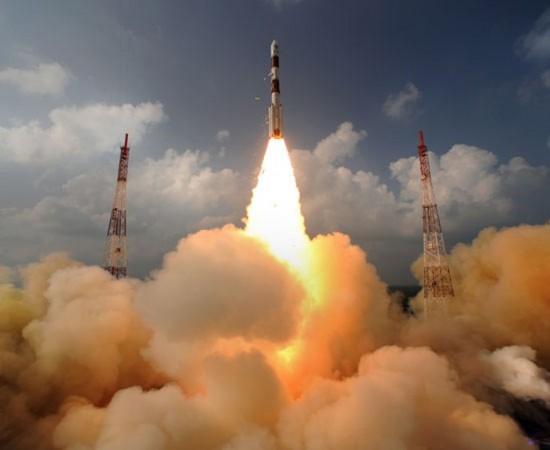
The second orbit raising manoeuvre of Mars Orbiter Spacecraft was completed in the early hours on Friday.
The orbit was raised from 11,372 kilometres (apogee-farthest point from Earth) to 40,186 kilometers at 2.18 a.m., according to a release from Indian Space Research Organisation (ISRO). The spacecraft was raised by 5,275 kilometres apogee to 28,825 kms on early hours of November 7.
ISRO's maiden Mars mission was successfully launched by the Polar Satellite Launch Vehicle- C25 (PSLV) on 5 November from Sriharikota, where the Orbiter was ejected and set at 248.4 kms perigee and 23,550 kms apogee at 2.38 p.m.
The 440 Newton Liquid Engine commanded by the scientists at the Spacecraft Control Centre at ISRO Telemetry, Tracking and Command Network (ISTRAC) in Bangalore, was fired for 570.6 seconds to raise the orbit of the Orbiter.
The Mars Orbiter weighing about 1340 kilograms was developed by ISRO at a cost ₹150 Crore. It carries 852 kilograms of fuel and around 360 kilograms will be spent on the seven orbit raising manoeuvres.
The orbit raising is done to push the spacecraft closer to the red planet. Five more such orbit raisings will set the Orbiter in the Martian Transfer, which enables Mars Orbiter spacecraft to travel to the vicinity of Mars in September 2014 after 300 days of travel in the deep space.
The Obiter spacecraft carries five scientific payloads to explore the Martian surface, morphology, mineralogy and atmosphere. The ₹450 crore mission is a technology demonstrator that will help ISRO develop technologies required for designing, planning, management and operations of an interplanetary mission.
With the launch, India has joined the list of elite nations- US, former Soviet Union and the European Space Agency.





!['Lip lock, pressure, pyaar': Vidya Balan- Pratik Gandhi shine in non-judgmental infidelity romcom Do Aur Do Pyaar [ Review]](https://data1.ibtimes.co.in/en/full/797104/lip-lock-pressure-pyaar-vidya-balan-pratik-gandhi-shine-non-judgmental-infidelity-romcom.jpg?w=220&h=138)







